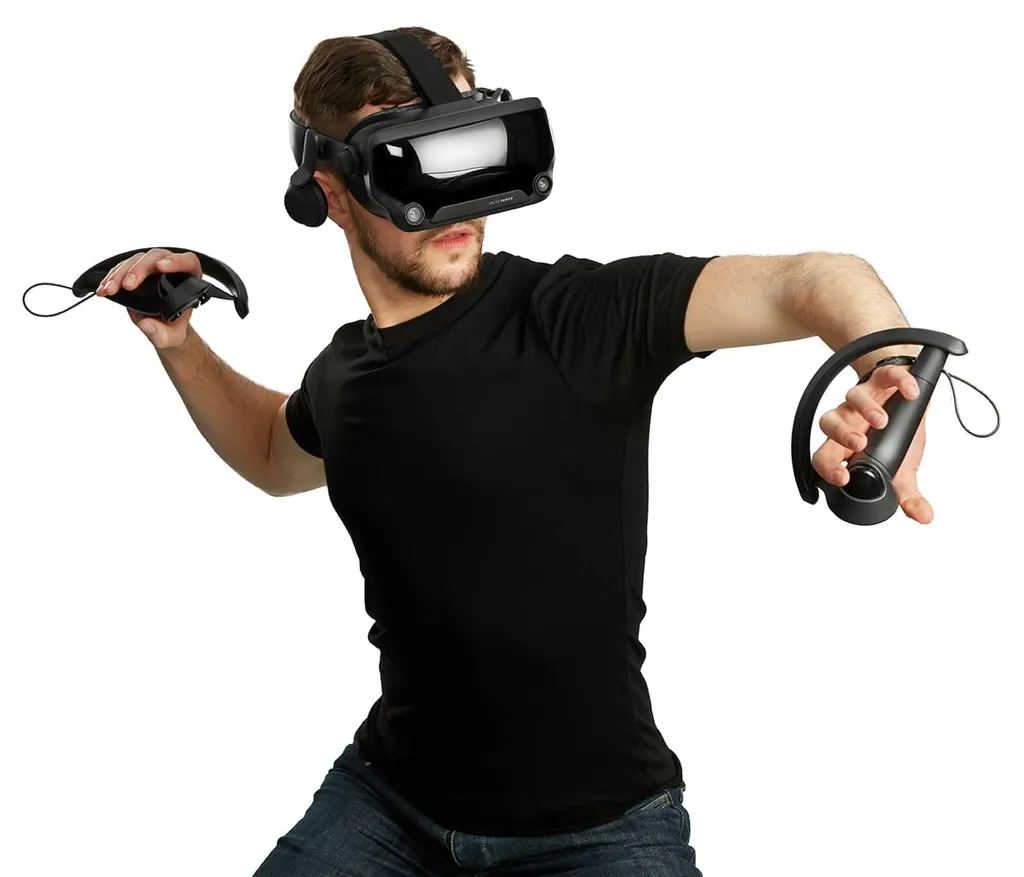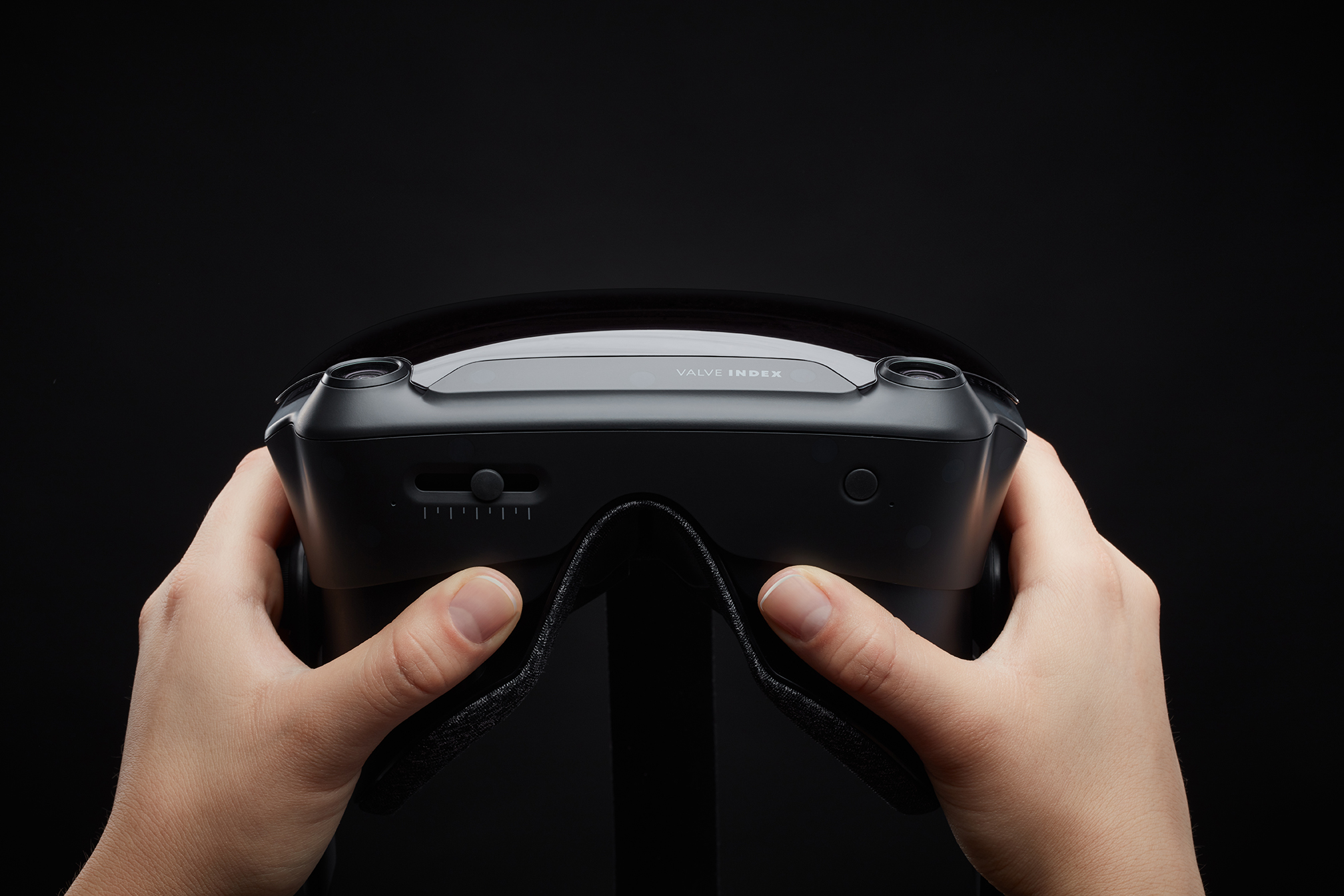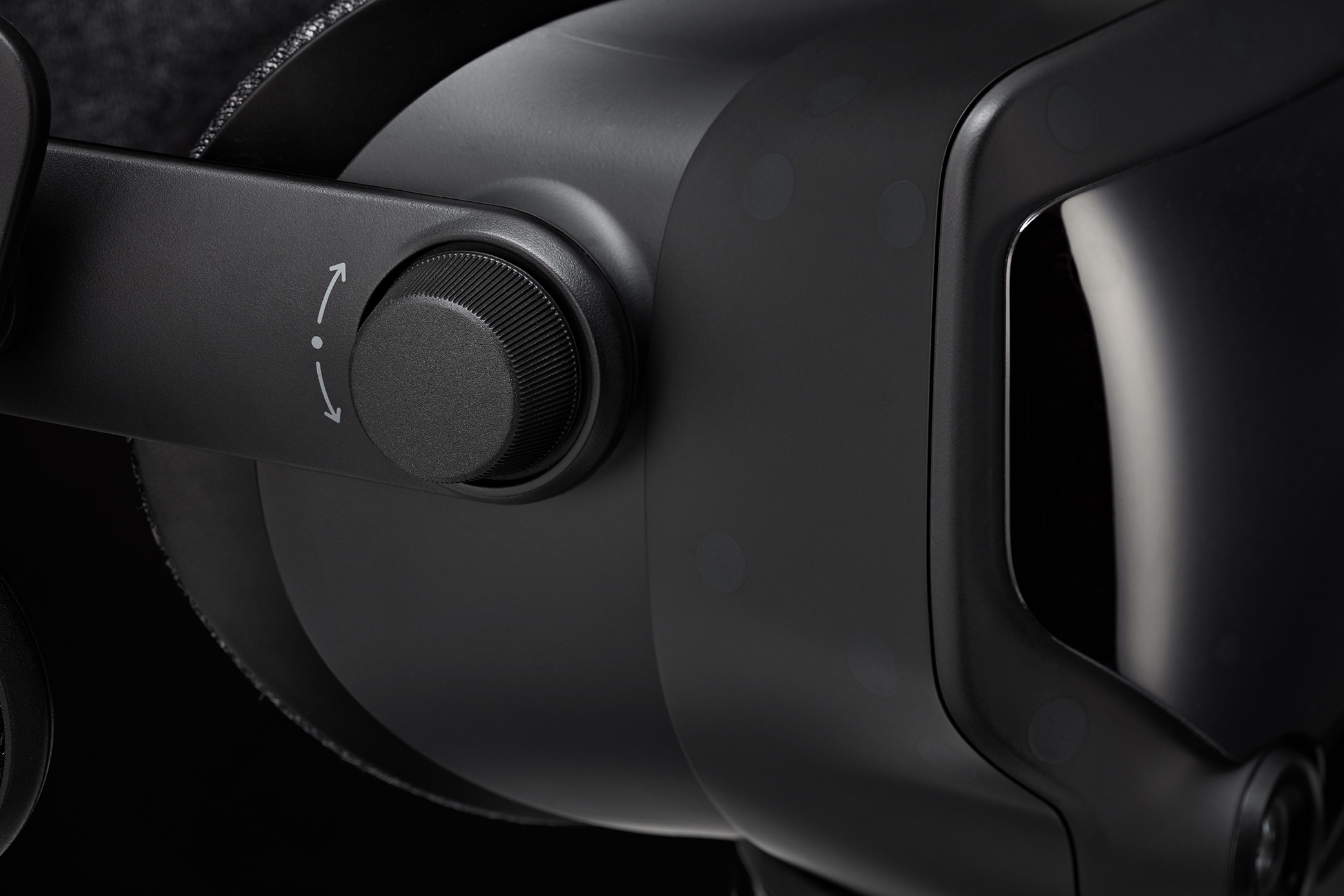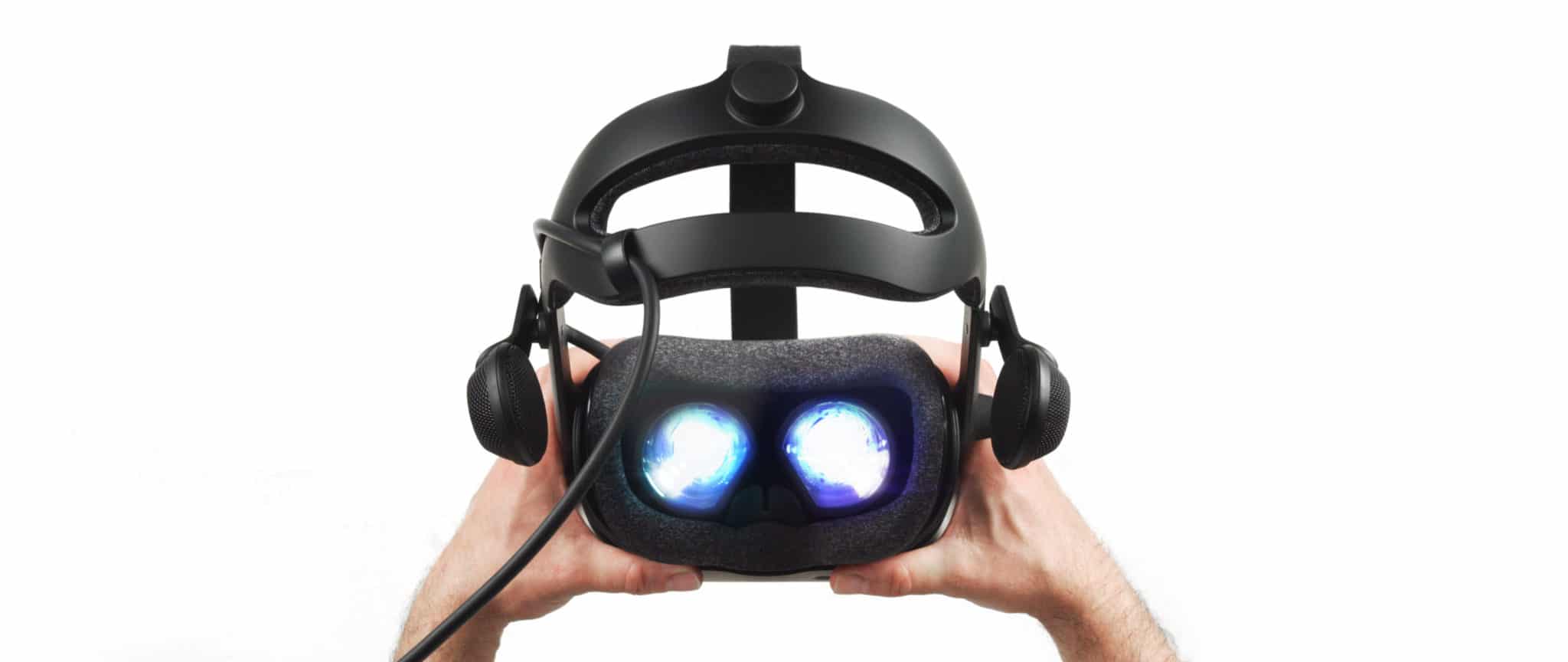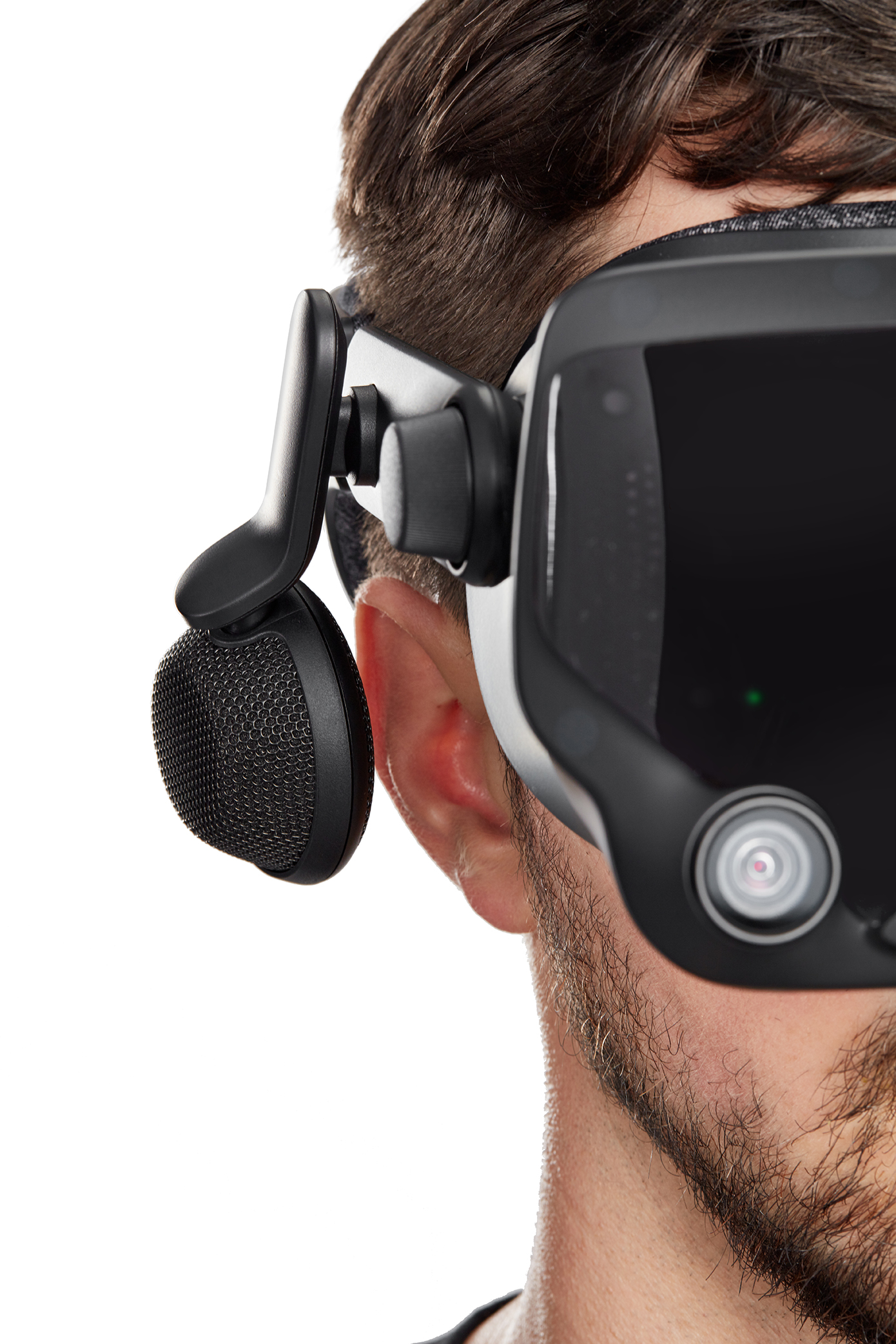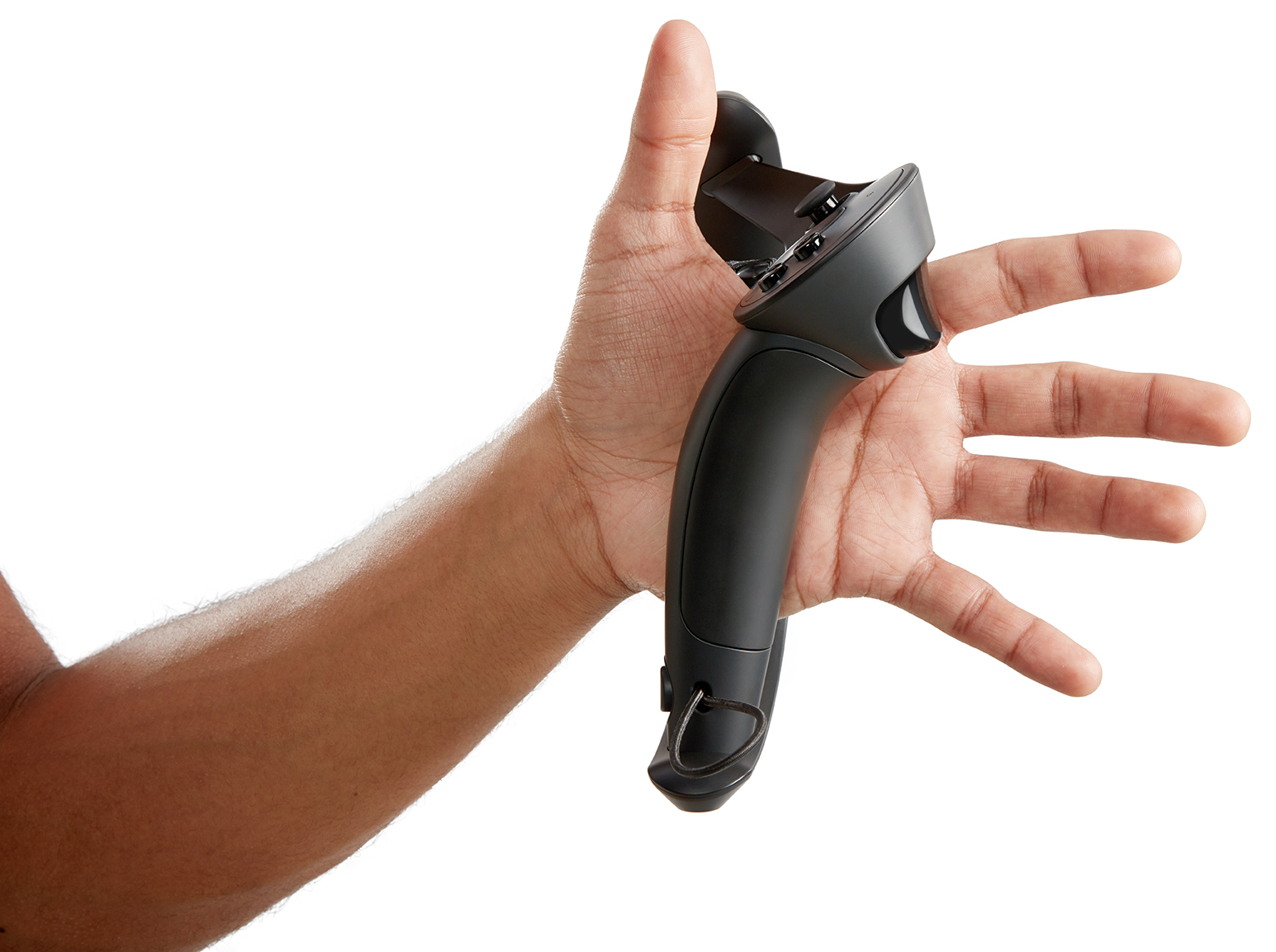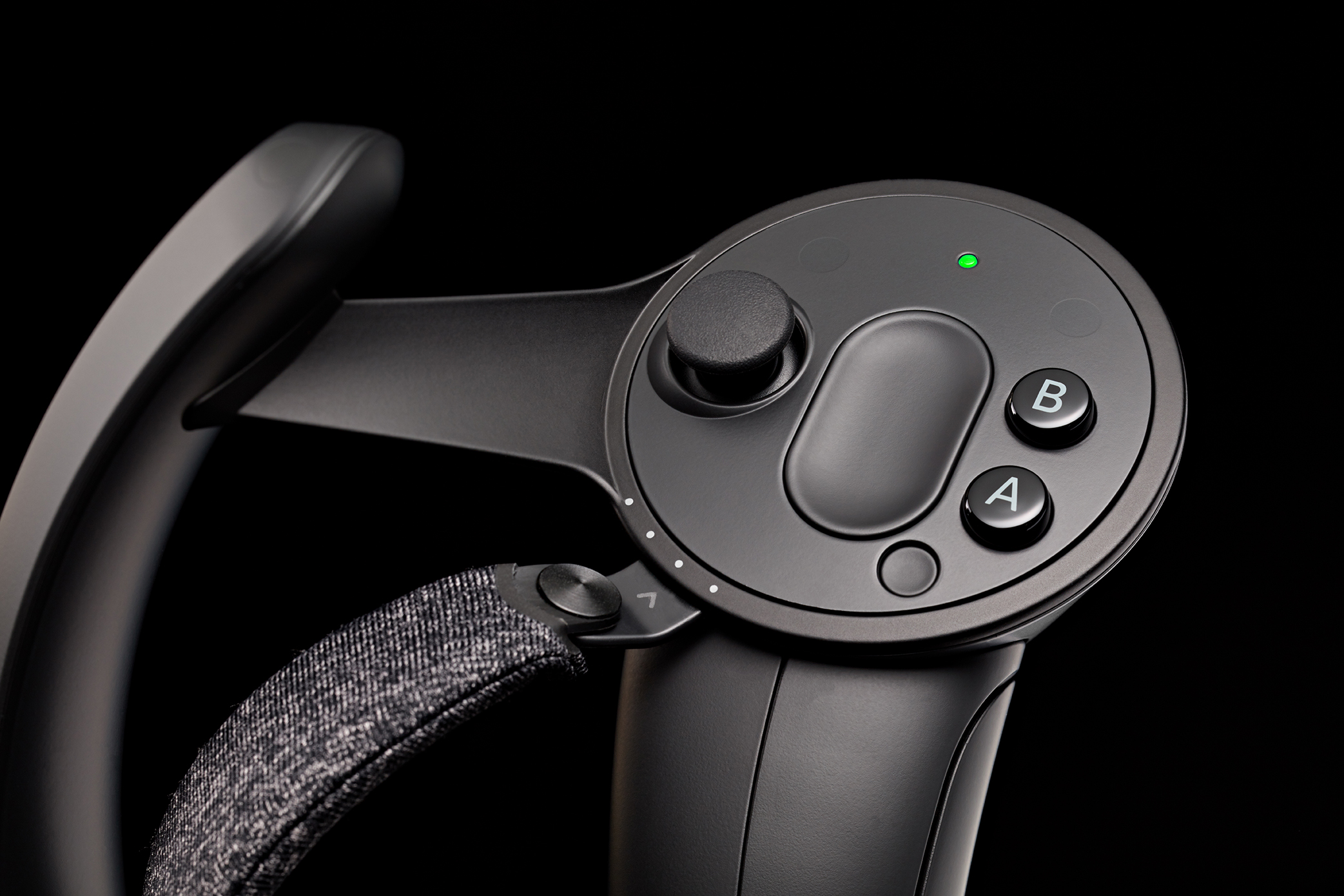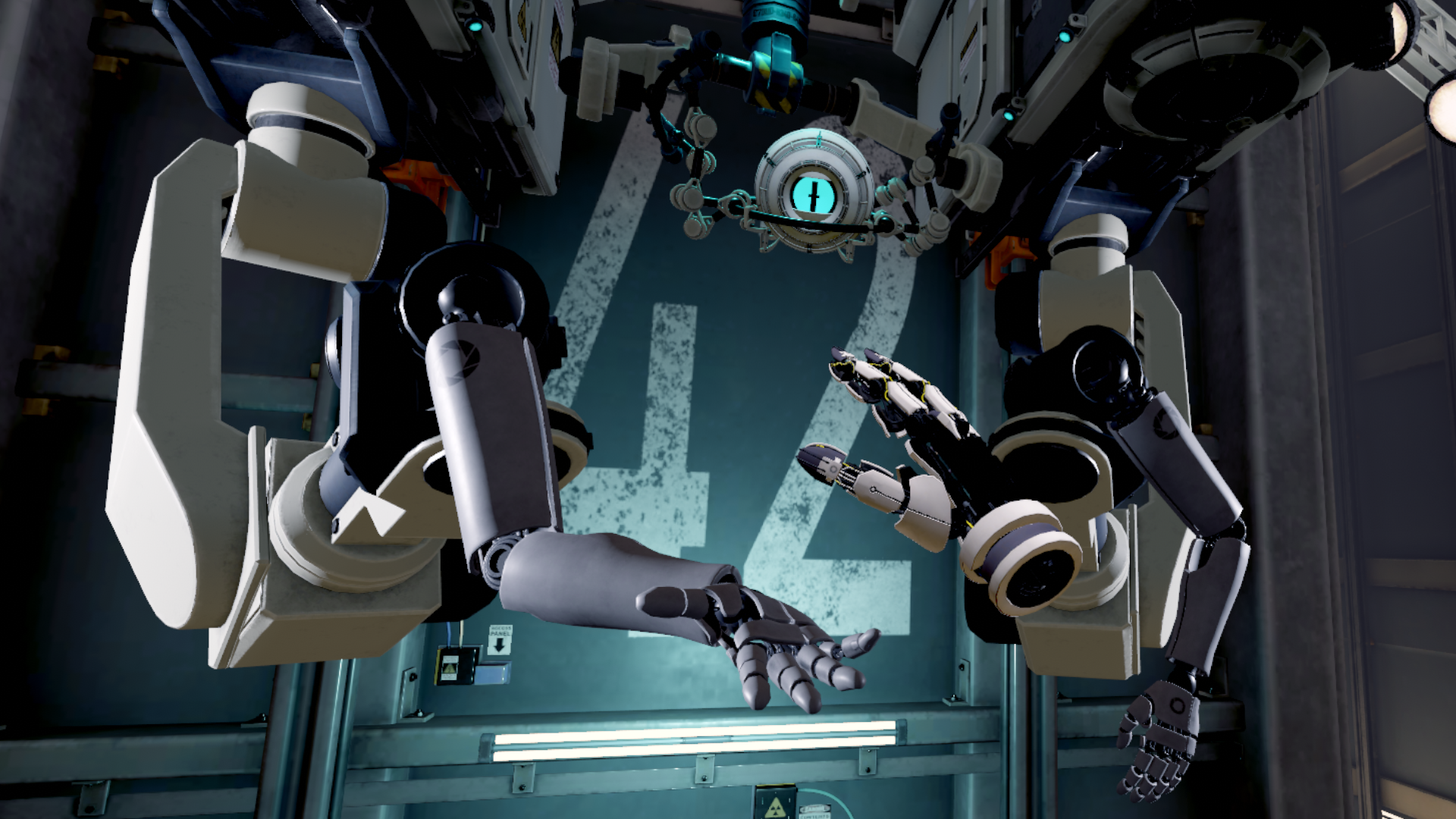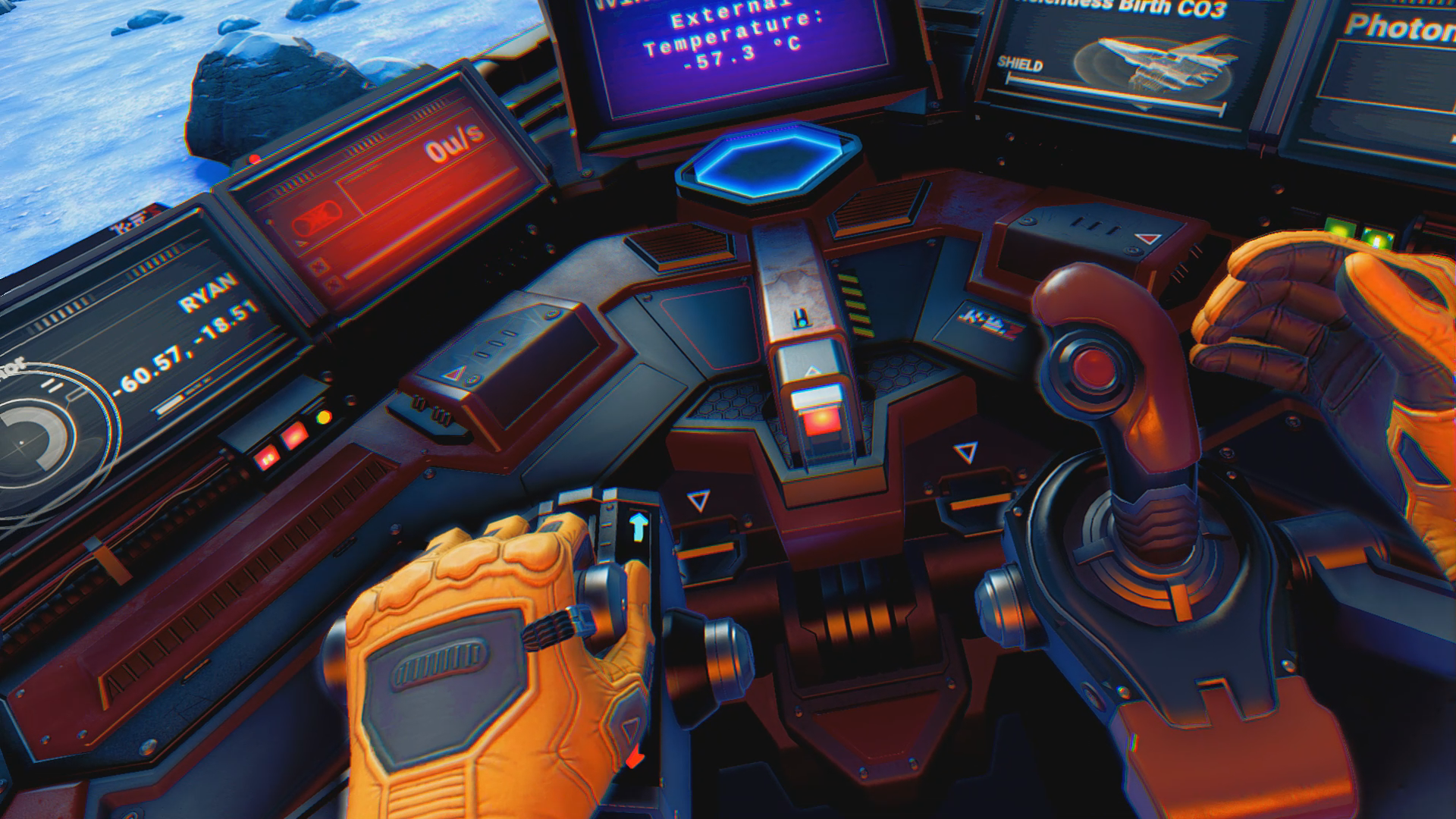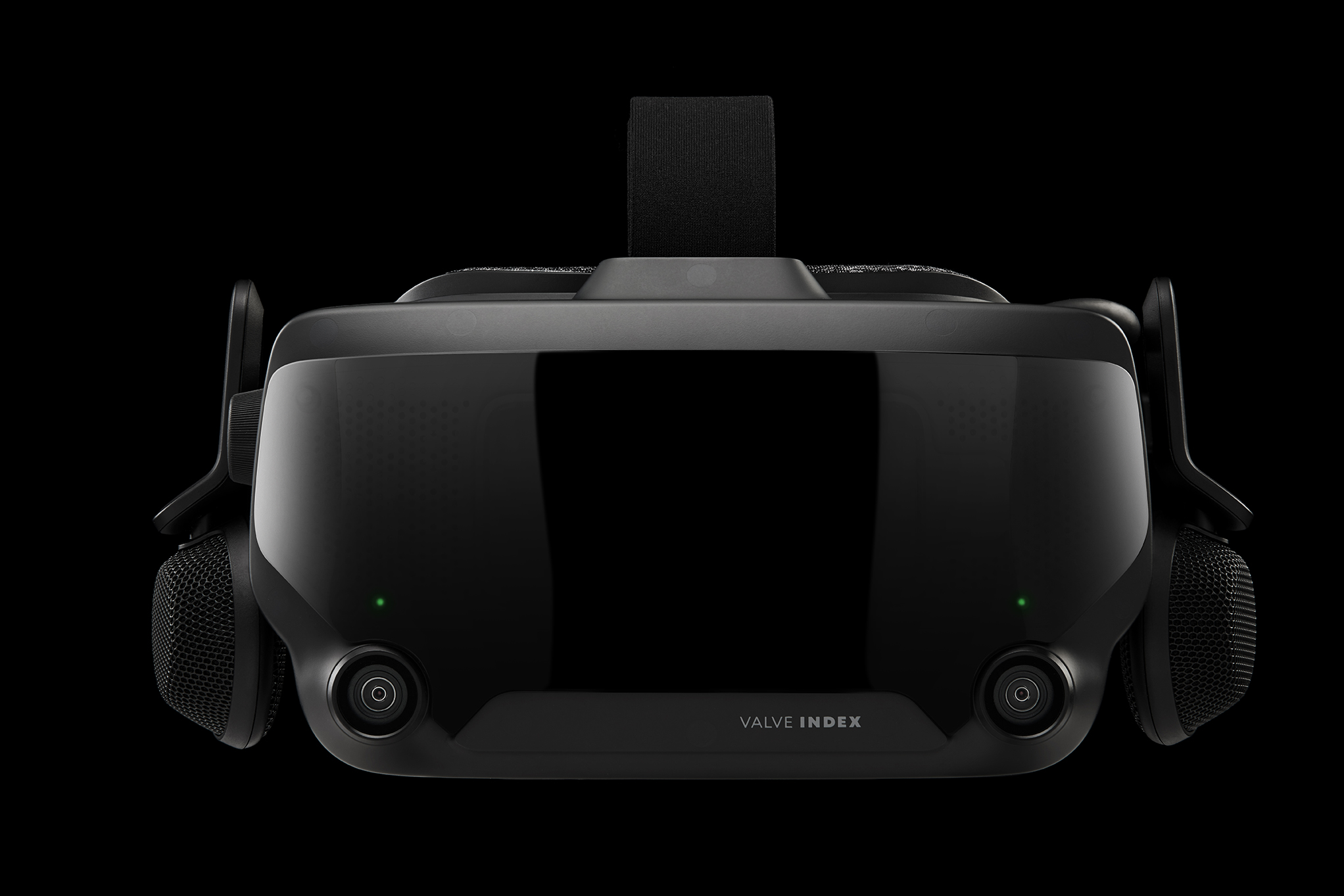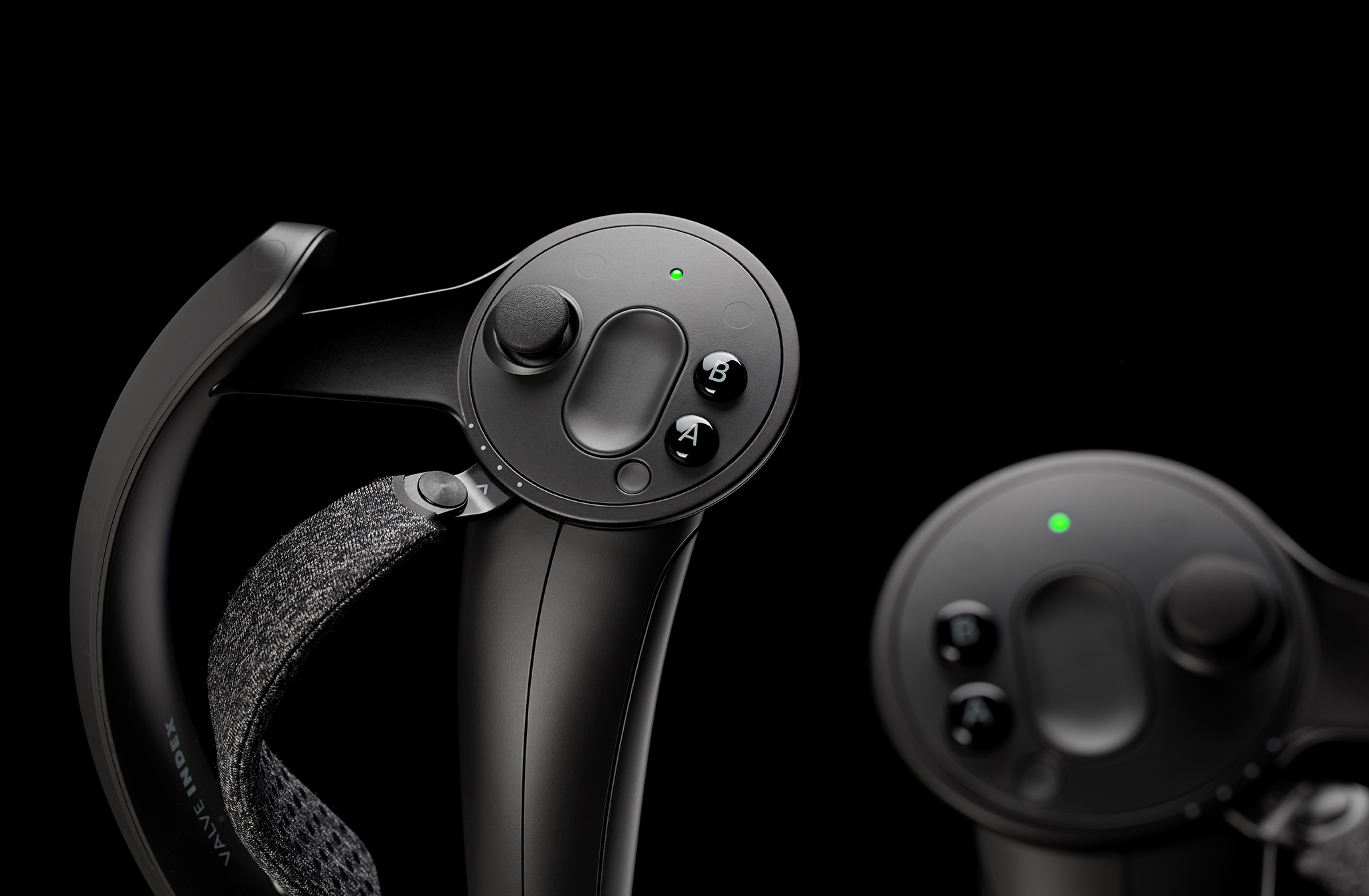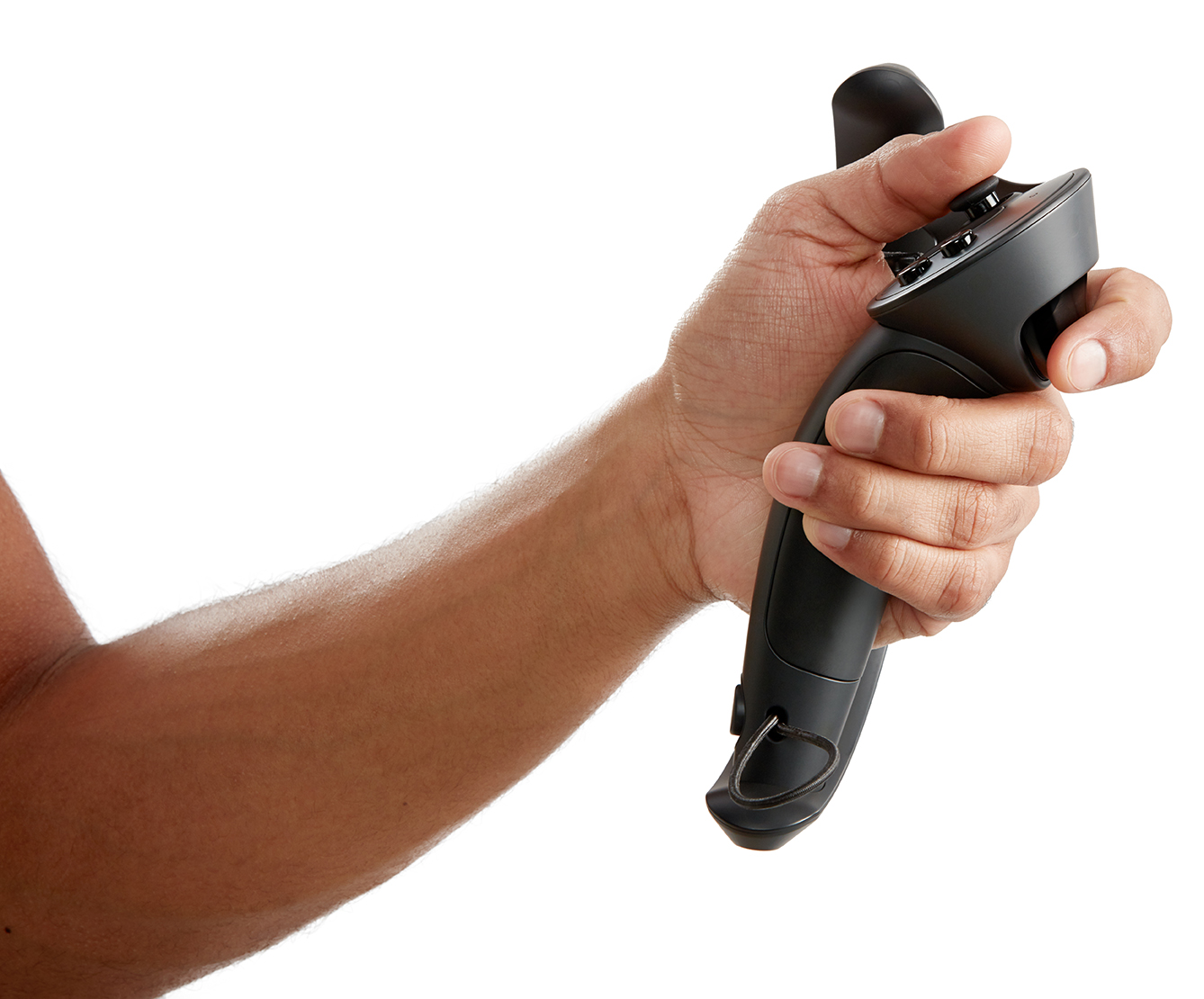I didn’t know the distance between the pupils of my eyes, but as I moved a slider on the bottom of the Valve Index head-mounted display from one extreme to the other I found it within seconds. Between 67 and 68 millimeters, the visuals delivered by Index seemed to lock into clarity and fit my binocular vision just right.
I recently used an app on my phone to confirm the distance between my pupils and found it measures 67.5 mm.
The slider adjusts the spacing of the Index dual-element lenses and two 1440×1600 LCD panels for inter-pupillary distances (IPDs) of 58-70 millimeters.
Fine Tuning Fit
A knob on the top-right side of the Index headset adjusts the distance of the lenses closer to the eyes. A single centimeter of change from this dial, according to Valve Corporation representatives, can expand or restrict the field of view into a virtual world by 30 degrees. “The lenses move independently of the facial interface (foam/gasket area) which means the lenses can get much closer to the eye,” a Valve representative explained.
Field Of View
Valve wouldn’t say specifically what the Index field of view is, citing confusion caused by the many ways it could be measured. The company did say, however, that Index is “20 degrees more than Vive for the average customer.” Depending how you measure, the original Vive is between 100 and 110 degrees for its field of view — but the actual FoV delivered by that headset could change based on individual fitting.
[gfycat data_id=”ValidWideeyedCottonmouth”]
Another knob on the back of the strap tightens the fit with more fine adjustment, and there’s a spacer included in the box some might want to use to provide an even better fit on the back of the head. Six or seven times adjusting the slider and dials for different demos and I had the entire fitting process down to just a few seconds.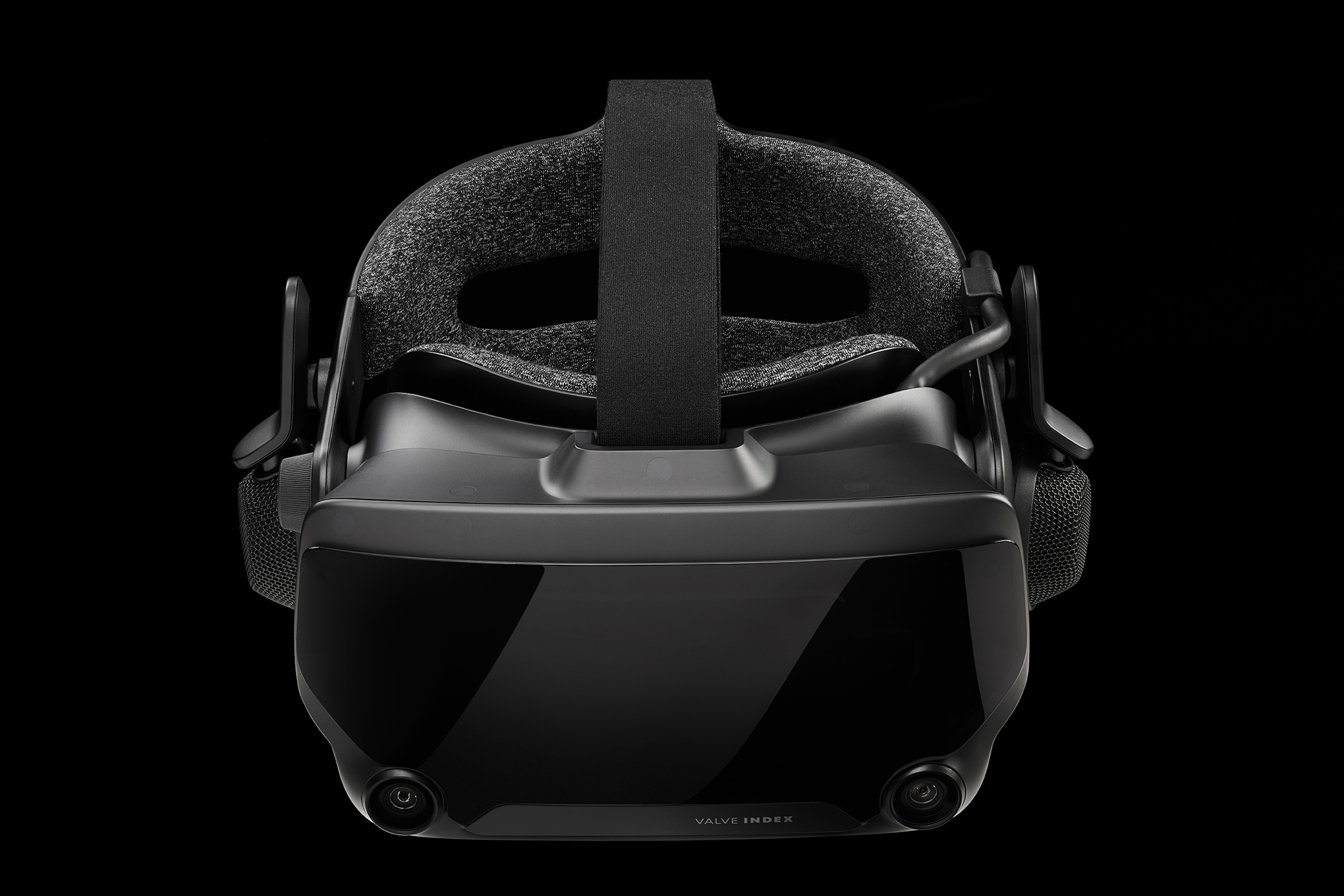
For HTC Vive or Vive Pro owners, the Index upgrade starts at $499 from their current system to just get the new headset. The jump in visual and audio fidelity is huge.
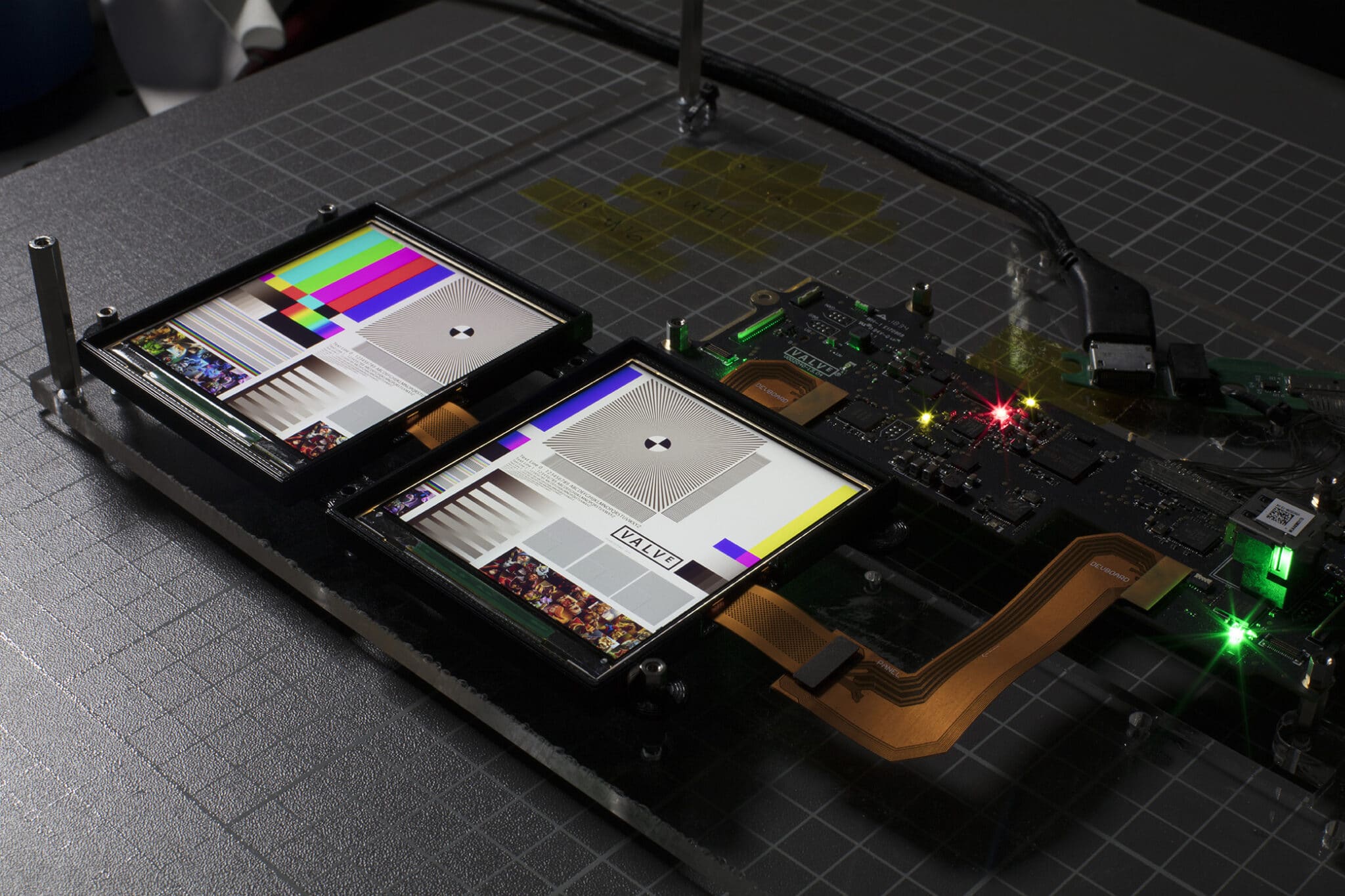
There are no more fresnel rings on the lenses to catch distracting light, there’s a proper fit to maximize field of view and visual comfort, and a wide sweet spot delivered by the optics encourages eye movement to look around a virtual world rather than feeling forced to resort to head movement just to see something clearly. The overall effect of these improvements on comfort is tremendous.
And the speakers were a delight as they hovered imperceptibly right outside the surface of my ears.
Valve Index supports a refresh rate of 120 Hz with an experimental mode at 144 Hz. I visited a series of virtual worlds with Index and felt completely comfortable and clear-headed both during and after use.
I haven’t tried HP Reverb or Pimax, but Index was better than Rift S as well as every other pre-2019 headset I’ve used.
Index Controllers
[gfycat data_id=”FewAmazingGrayreefshark”]
Index controllers (previously known as Knuckles controllers when they were just developer kits) are the first broadly available consumer VR controllers to be worn instead of just held.
Push in a tab at the top of the strap to adjust for various hand sizes. Pull a cord at the bottom to tighten the fit and repeat for the other hand.
Aperture Hand Labs
In Aperture Hand Labs I high-fived a robot, reached out and shook its hand and then opened up an envelope by pinching a tab between my index finger and thumb and peeling open the package. Valve says there are 87 sensors per controller “including optical, motion, capacitive and force sensors.” 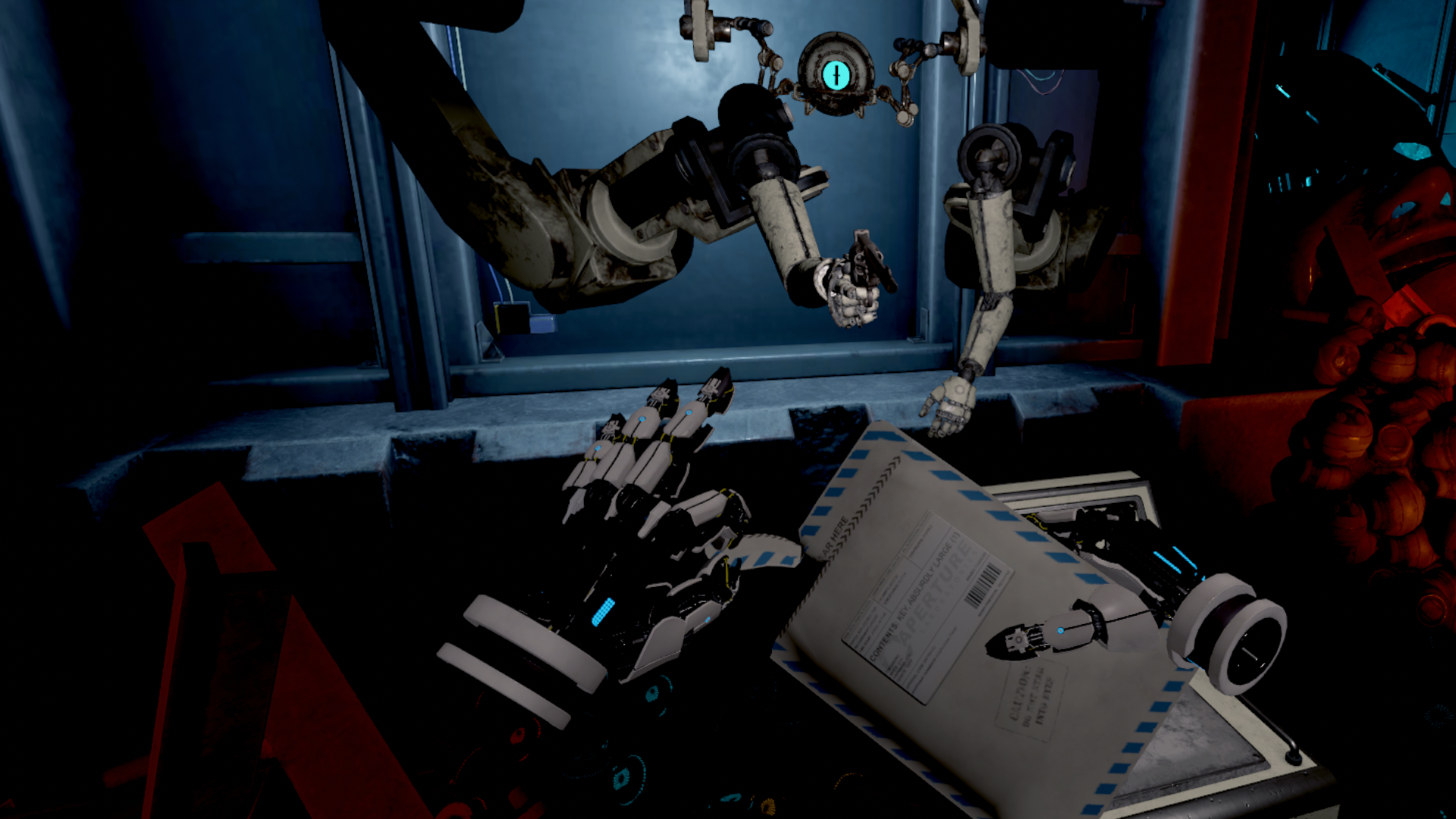
Cloudhead Games worked on the experience with Valve and they used those sensors for some real wow moments with the Index controllers.
No Man’s Sky
On a scorched planet I peered into the distance through heat haze shimmering with the invisible smoothness of 144 Hz.
I admired the distant features of the alien planet instead of seeing squares through a screen door. Then I burned a hole into the planet with a hand-laser and explored the underground cave I made. I teleported to the surface, called down my ship, climbed into the cockpit and took off into the stars.
Boneworks
I used the analog stick on the Index controllers to move toward a row of lockers. Reaching forward, I grasped the handle and pulled it open to find a crowbar. I leaned down and grabbed the metal tool with my right hand. I turned my wrist and brought the crowbar down to my open palm and clenched my fingers around the left controller. Now, I was holding it with two hands.
I smiled and put the crowbar away in my backpack for later.
Vacation Simulator
Devin Reimer of Google-owned Owlchemy Labs asked me to identify the location of a virtual speaker emitting music.
Without looking, I pointed to a spot behind me about 10 feet away and three feet above my head. I looked where I was pointing and my outstretched finger was directed straight at the speaker.
Beat Saber and Bigscreen
Whether it was the active slashing of Beat Saber or playing Far Cry New Dawn in 2D on a theater-sized screen, the clarity of the visuals and my subtle sense of added comfort in those worlds started to convince me that Valve representatives were telling the truth when they said they put “fidelity” above all other considerations in the design of Index.
Powering Index With PCs and Steam
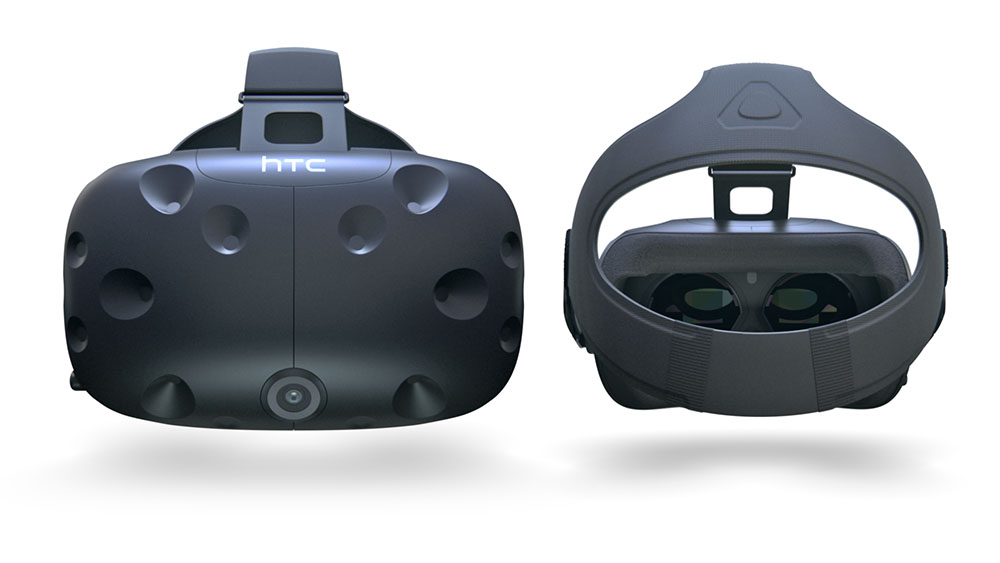
In 2016, Valve enabled HTC’s efforts to enter the VR market on PCs with SteamVR Tracking embedded in the Vive headset and controllers. Two “lighthouse” base stations mounted in opposing corners of the room provided room-scale tracking.
In 2019, the Valve Index HMD is a $499 upgrade to that system as well as 2018’s Vive Pro. Based on my first impressions, it appears to be a step up in comfort and quality in every regard compared with either system.
$749 buys both the Index HMD and the two Index wearable controllers.
Both the controllers and headset can be tracked by the same “lighthouse” base stations which first shipped three years ago.
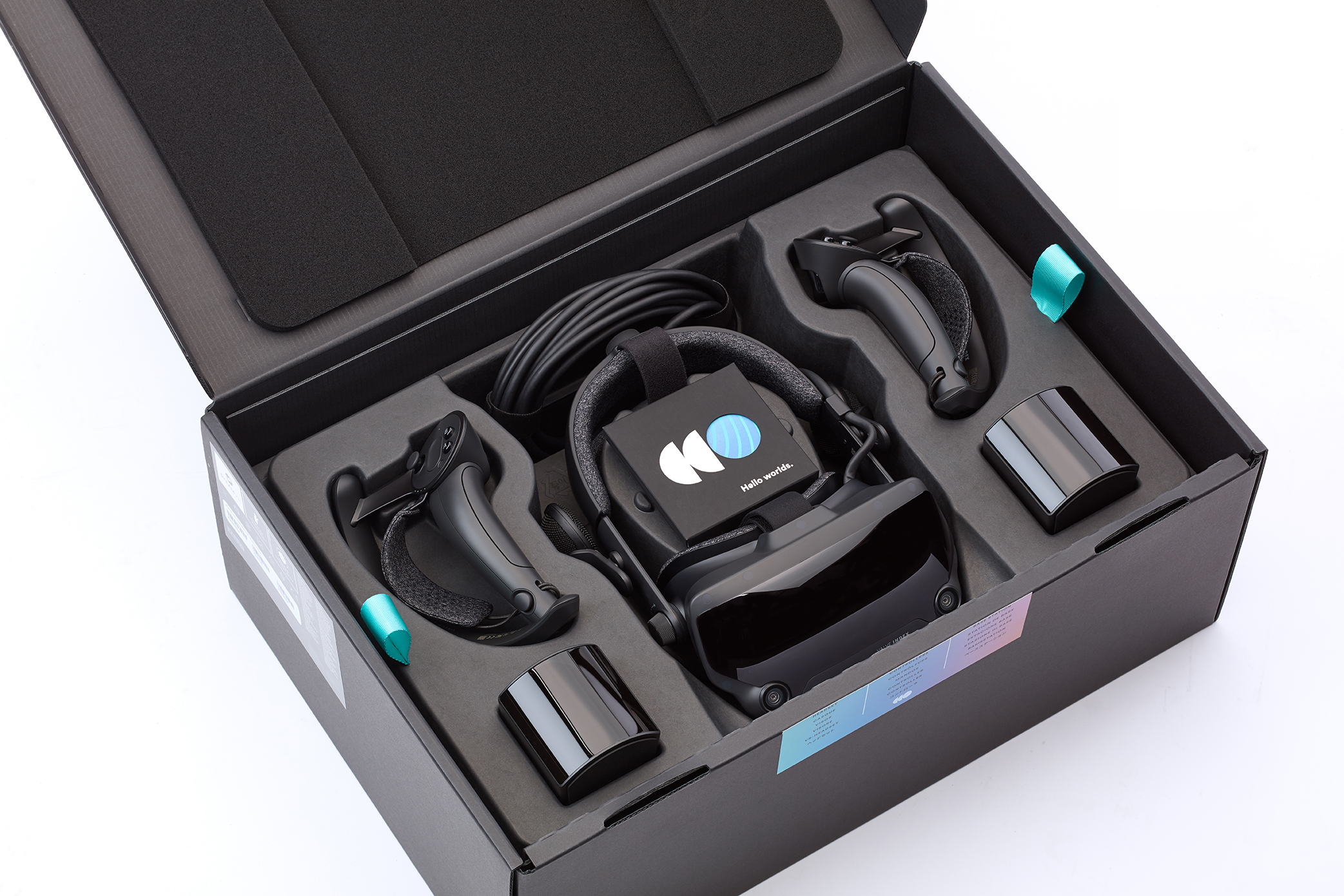
While the Index HMD was extremely impressive in demos ranging from 120 hz to 144 hz, I found myself confused by the range of implementations of the Index controllers.
One developer placed teleport on the controller’s trigger. Another developer placed it on the touchpad. Another developer used analog stick locomotion. Yet another developer used the touchpad and trigger together for the memorable pinching interaction. Each developer had, in essence, come up with different locomotion and interaction techniques for the Index controllers.
The range of implementations is typical of Valve’s approach to the VR market on PCs developed through internal and external experimentation with partners. What we haven’t seen, yet, is what Valve’s own teams have done with this same hardware.
There are no software bundles with Index at launch and Valve only confirmed a “flagship” VR game from Valve due in 2019 for all VR headsets which connect to Steam. Valve representatives declined to say anything more about it.
“This is going to ruin you,” a Valve representative told me before I strapped on the Index controllers one last time and played Beat Saber at 144 Hz.
After spending all weekend with the same game on other VR headsets, I have to say that he was mostly right. I just wanted more time with Index.

